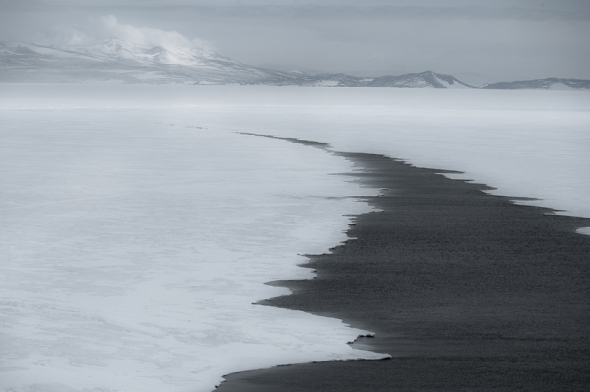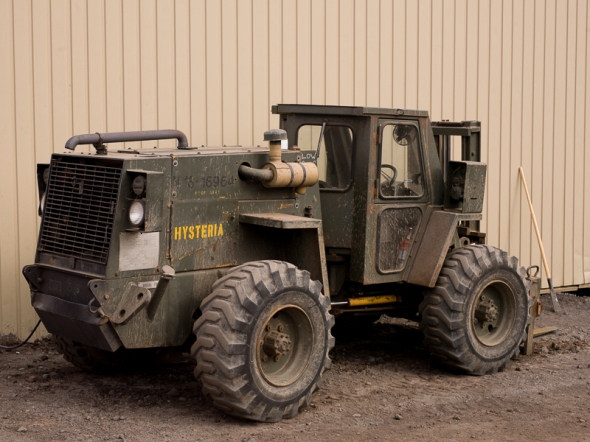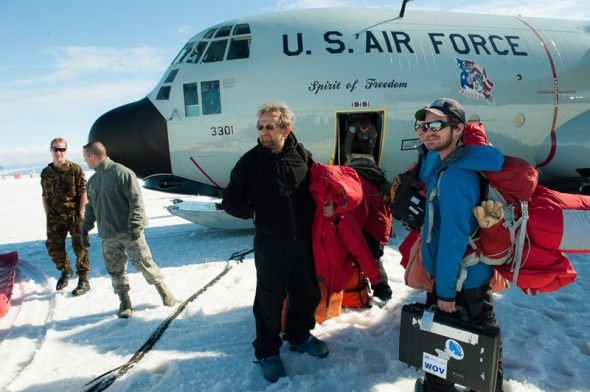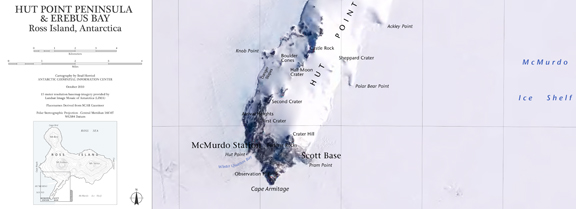McMurdo Station is here for one reason: scientific exploration in the polar environment (and to maintain a geopolitical toe-hold on this continent , but that is an expose’ for another time).
When I wander around the labs of Crary Science & Engineering Center I have daily conversations with all sorts of researchers – biologists looking at the antifreeze and deep sea pressure properties of the Antarctic tooth fish, engineers soldering new optics or motherboards into R.O.V. (remotely operated vehicles), killer whale biologists trying to determine the distinct speciation of whales around this continent and the classic NASA scientists foraging for life forms in the most unlikely – and unkindly – environments on this planet in order to infer what might be dwelling on distant celestial bodies.
So goes the logic, that if life can adapt and persevere here, so too can it in Mar’s ancestral ice or on Europa, Jupiter’s icy moon. Like working on the moon, Mars or Europa, make no mistake about it, working here in Antarctica is difficult and expensive.
Although I am a “new guy on the ice”, I am not unfamiliar with working in cold, snowy, and otherwise inhospitable places. In fact, I enjoy it and thrive in such environments. Being 5’4″ x 5’4″ I am built like a coal-fired furnace and function like one. But the same low-torque driving energy that I engage the world with in most places, is not necessarily the most fitting, forge-ahead initiative appropriate to navigate through the opaque chain of command that lets (or prevents) science from happening here in the first place.
In other words, to be in a “wild” place where the wild is mostly inaccessible until permission is granted, transport is provided and forms meticulously filed in triplicate, is, ahem, a lesson in patience. Pile on the tempestuous weather and one has to question, well, why bother work in a place that is so unaccommodating to work in to begin with.
In a previous post, I confessed that I surrendered to this frustrating process in order to be less frustrated. And surrender I have. And now, more happy and entertained by the stop and go absurdity of this process, I am able to move on – in lieu of photography – to take up a new practice: “Patience.”
Couched in terms of an adaptive trait, the notion of “Patience” is what I have been meditating on for the last month as I – and all the scientists I came to photograph – sit mostly idle (and festering) in Crary lab, eating again at the galley or sequestered in our dorm rooms reading or watching movies as the tempest of weather and politics swirls around us.
Like Weddel Seals sleeping head-on into the wind, drifts sculpted around its motionless head, I wonder if it is they that I need to take my cues from. They lie side- or belly-up for hours, digesting their fill of fish and crab, seemingly content with their exposure to the blank and brutal terrestrial elements. When they do move across the serrated sastruggi surface, they do so awkwardly, all painfully achieved in a clownish, blubbering and rolling motion that seems less efficient than if they just log-rolled themselves from place to place.

What happens below the ice I do not know. I have, however, been lucky enough to witness a few seals make ephemeral, arabesque appearances in slushy surface holes, bent in full-body demi-plie’, where it is obvious they are most agile and in their element, naturally.
I, however, am beset with the paralysis of limbo, laying exposed to the elements as someone else (and the weather of course) dictates when and where I can and cannot go. In that state, I must channel the limbo of the seal, put my head into the wind and let the snow and wind sculpt a shelter around me. Patience is, from an evolutionary vantage, a damn good and efficient use of energy down here. Just short of hibernation, calm idleness seems to be a good vehicle to swim the chilly, upstream battle here.
The other evening I ran into Andy Young, a mechanic and all-round renaissance fella I met years ago in Boulder, Colorado and then again in Alaska a few times. He has worked here in McMurdo for 18 seasons in all sorts of capacities, and by his own admission, patience was the most significant take-home lesson of his time spent here.
“I’ve discovered that there are reasons behind reasons behind reasons that I will never be privy to. And that is ok with me, because I have come to understand that they are most often good ones,” he said.
It was freeing to hear that. Uncovering the origins of a decision here is exhausting, much like trying to unearth life at the depths of an ice-encased lake. Mysteries are not easily or immediately solved.
Point taken.
In addition to that conversation I have heard repeatedly from seasoned others that some research efforts are on occasion, total washes. More so there are tales of researchers waiting for more than a month to get into the field. Last season the Pine Island Glacier project (PIG) accomplished nary a notebook worth of real science. This year they are rumored to have achieved “150-percent” more science than they anticipated.
Here in the WISSARD project we have had to build scenarios that prioritizes which and what scientific instruments will be deployed down the bore hole based on the number of available days and hours that we are out in the field. At this point, given our repeated delays, we have scenarios spelled out that allow for 5-day, 4-day, 3-day, 2-day and yes, 1-day of science opportunities.
“One day of good science in the Whillans bore hole.” said Principle Investigator John Priscu, “is worth it.”
With more than 800-meters of ice to drill through still – and after more than $10,000,000 spent thus far, those few days of science are precious, to say the least.
Long terms research anywhere demands patience and perseverance. Here it demands even more. Apparently, the seals and the seasoned employees here know it and, for whatever it is that fuels their curiosity and research over the years, I respect it and willing to wait out the elements with them. When we get a chance to do our work, I trust that we will all do swimmingly, be it this season or, quite possibly, next season. Either way, we are gambling that our practice of patience pays off.






















Recent Comments